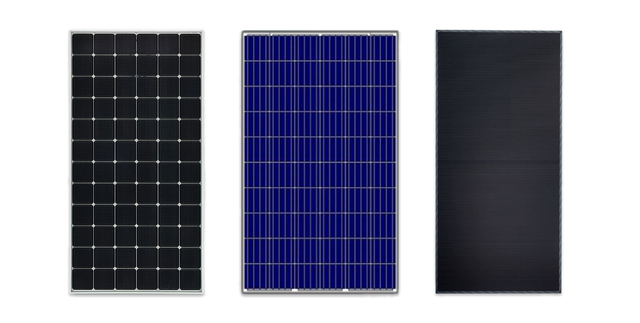The 8-Minute Rule for Solar Systems
Wiki Article
Facts About Solar Systems Revealed
Table of ContentsHow Solar Systems can Save You Time, Stress, and Money.Solar Systems Fundamentals ExplainedWhat Does Solar Systems Mean?The Definitive Guide to Solar Systems
There are 3 various types of photovoltaic panels: monocrystalline, polycrystalline, and also thin film. Monocrystalline photovoltaic panels are very efficient and have a sleek style, however come with a greater rate factor than various other photovoltaic panels. Polycrystalline photovoltaic panels are cheaper than monocrystalline panels, however, they are less efficient and aren't as aesthetically pleasing.Nowadays, there are several varieties of monocrystalline solar panels on the market to pick from., are coming to be a progressively popular monocrystalline option.
Due to the fact that monocrystalline solar batteries are made from a single crystal of silicon, electrons have the ability to quickly flow throughout the cell, raising total effectiveness. Not only do monocrystalline panels have the highest efficiency rankings, they normally additionally have the highest possible power capability scores. A lot of monocrystalline panels on the market today will have a power output rating of at least 320 watts, yet can rise to around 375 watts or higher!.
Due to the fact that polycrystalline cells include multiple silicon cells, the electrons can stagnate as conveniently and as an outcome, reduce the performance of the panel. The lower performance of polycrystalline panels also suggests they tend to have a reduced power output than monocrystalline panels, normally ranging in between 240 watts and also 300 watts.
An Unbiased View of Solar Systems
4% performance with thin movie cell prototypes however. In order to meet your power needs, you would need to mount more thin film panels over a huge location to create the very same quantity of power as crystalline silicon solar panels. This is why thin film photovoltaic panels don't truly make good sense for residential installations where area is restricted.The temperature coefficient informs you just how much the power output will certainly lower by for every 1 * C over 25 * C the panel gets. The basic temperature coefficient for mono and also polycrystalline panels normally drops somewhere in between -0.
With some slim film panels, it's hard to also see the individual cells within the panel. They also often tend to have less circuitry as well as busbars, implying there's much less white area. Since they are so inefficient, you would certainly need to cover your whole roof in slim film panels - which might or might not be your style.
/types-of-solar-panels-pros-and-cons-5181546_finalcopy-93f1db65349840bdba2822f75fa592f9.jpg)
Some manufacturers have actually functioned around this with black packaging or shaping the cells in a different way, however these aesthetic changes can influence both the rate as well as performance of the panels. Generally, monocrystalline panels still look smooth, but they're a bit more pronounced than slim film panels. solar systems. The process in which polycrystalline solar batteries are produced causes the cells to have a blue, marbled appearance.
7 Easy Facts About Solar Systems Shown
If you get on a tight spending plan, polycrystalline panels may make even more sense for you. We do not advise thin film photovoltaic panels for domestic installations - their efficiency as well as resilience don't make the inexpensive worth it, and it's not likely you'll have nearly sufficient space to set up the variety of thin movie panels you would certainly need to cover your family electrical power use.Since they are made from pure silicon, they can be easily recognized by their dark black color. Using pure silicon also makes monocrystalline panels the most space-efficient as well as longest-lasting amongst all three solar panel kinds. However, this comes at a price a lot of silicon is squandered to generate one monocrystalline cell, sometimes reaching over 50%.

Amorphous silicon panels (A-Si) acquire their name from their shapeless nature. Unlike mono-and polycrystalline solar cells, the silicon is not structured on the molecular degree. Generally, an a-Si cell requires only a portion of the silicon required to generate typical silicon cells. This enables them to have the most affordable manufacturing cost, at the expense of effectiveness.
Getting My Solar Systems To Work
50 More Bonuses $0. 50 $0. 50 Note that these numbers do not include the cost of installation and labor.
This means that thin-film panels can be an excellent option for hotter environments or locations that experience even more sunshine throughout the year. The upgraded International Building Code of 2012 requires solar panels to match the fire score of the roof covering where they are installed. This is to guarantee that the modules do not speed pop over to this web-site up the spread of fires in the occasion of a fire.
Report this wiki page